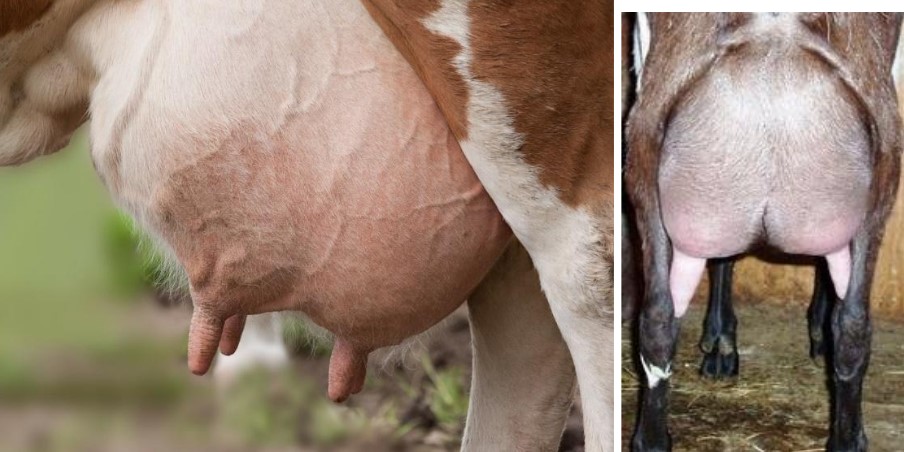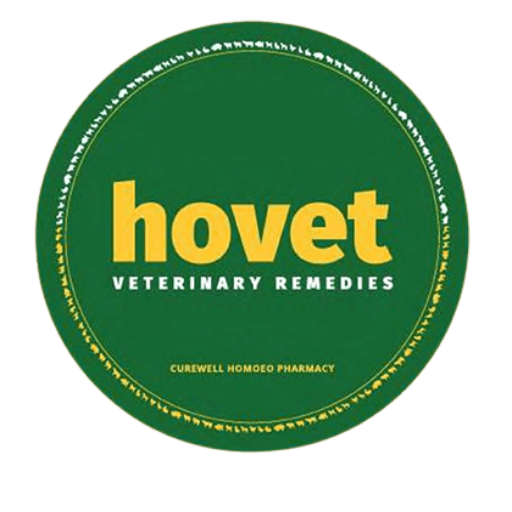MASTITIS IN DAIRY ANIMALS (bovine)AND HOMEOPATHY

ABSTRACT:
Bovine mastitis is the persistent, inflammatory reaction of the udder tissue due to physical trauma or micro organisms infections, Mastitis, a potentially fatal mammary gland infection, is the most common disease in dairy cattle worldwide, It is a primary endemic disease of bovine animals in dairy cattle, bovine animals are know as animals in bovide family, which includes sheep, goats, cattles and buffalo’s. bovine mastitis causes economic losses due to reduced yield and poor quality of milk. Milk from bovine animal suffering from mastitis has an increased somatic cell count, and milk-secreting tissues and ducts of the udder may be damaged, or sometimes permanent damage can occur, in such conditions, homeopathy has proved to be very effective and cheap, if holistic approach chosen, in this article I will discuss about the major cause of bovine mastitis (mastitis in dairy animals) and management .
CAUSED DUE TO,
physical trauma (like any injuries):
- Bloodstains due to the injury on the udder caused by biting by other species, kids biting the udder causing blood, insect bite, or due to thorn while they are browsing or entering into the dense area of plants.
- Now a days most of them are using machine for milking, it’s also one of the cause
MASTITIS CAUSING BACTERIA
- Bacterial infection – streptococci, staphylococci, E.coli, corynebacteri pyrogens.
- These bacteria can be classified as environmental or contagious depending on mode and source of transmission. These bacteria live on the bovine udder and teat skin,colonizing and growing in to the teat canal.
OTHER CAUSES
- They are also known as genetic factors or resistance to mastitis, also pure breed or cross breed of high yielding cattles, partialy Holstein, Friesian cattle appear to more genetically vulnerable to mastitis than are giving medium yield, jersy cattles were reported to have lower rate of mastitis than Holstein – Friesian cattle
- multiparous animals re more vulnerable than primiparous animals due to immune incompetence
- udder structure also affects the susceptibility to the infection, bovine animals with large funnel shaped udder or pendular shaped udder and blind quarter after calving are at greater risk of mastitis.
- Older bovine animals are more susceptible to infection because irreversible damage caused by previous inflammations,
- During drying period and first month of lactation there is a high chance(during lactation period there is high demand of energy and nutrient for the synthesis of coloustrum and milk by bovine animal)so when feed intake not meet the lactation,proper management of supplementation of vit e and zinc helpful to prevent mastitis also homeopathy will also effective.
- Environment factors like contaminated floor,wet bedding,poor ventilation and hot and humid climate can promote growth of mastitis.
TYPES OF MASTITIS:
- Clinical Mastitis. The mastitis of a cow that produces the clinical signs like redness, swelling, hot, and painful udder changes the color and odor of milk, reduced milk production, and hardening of the udder.
- Sub-clinical Mastitis. The mastitis does not produce the clinical signs, but changes in the milk like increase the somatic cell count in the milk.
- Per acute Mastitis. The sudden onset of fever from 107-108 F, severe toxemia due to Streptococcus agalactia, recumbency, and death due to bacteremia and toxemia.
- Acute Mastitis. The bovine mastitis is the sudden onset of clinical signs with fever, inflammation of the udder, decreased milk production, and physical changes of milk quality.
- Sub-acute Mastitis. The mastitis does not produce systemic signs like fever, toxemia, and bacteremia but causes changes in the udder and milk.
- Chronic Mastitis. The bovine mastitis does not produce clinical or systemic signs. Still, there is an organism in the udder, which increases the somatic cell count and chances of re-infection.
…………………………………….
- Clinical Mastitis. The mastitis of a cow that produces the clinical signs like redness, swelling, hot, and painful udder changes the color and odor of milk, reduced milk production, and hardening of the udder.
- Sub-clinical Mastitis. The mastitis does not produce the clinical signs, but changes in the milk like increase the somatic cell count in the milk.
- Per acute Mastitis. The sudden onset of fever from 107-108 F, severe toxemia due to Streptococcus agalactia, recumbency, and death due to bacteremia and toxemia.
- Acute Mastitis. The bovine mastitis is the sudden onset of clinical signs with fever, inflammation of the udder, decreased milk production, and physical changes of milk quality.
- Sub-acute Mastitis. The mastitis does not produce systemic signs like fever, toxemia, and bacteremia but causes changes in the udder and milk.
- Chronic Mastitis. The bovine mastitis does not produce clinical or systemic signs. Still, there is an organism in the udder, which increases the somatic cell count and chances of re-infection.
SYMPTOMS: There are different types of signs of the disease you may see. The main signs of the mastitis are:
- Abnormalities of the udder such as swelling, hardness, heat, redness, and pain.
- Abnormalities of the udder secretion and the milk look watery , cheesy appearance, flakes, pus, or clots.

Effects on milk composition:
Mastitis can cause a decline in potassium and an increase in lactoferrin. It also results in decreased casein, the major protein in milk. As most calcium in milk is associated with casein, the disruption of casein synthesis contributes to lowered calcium in milk. The milk protein continues to undergo further deterioration during processing and storage. Milk from cows with mastitis also has a higher somatic cell count. Generally speaking, the higher the somatic cell count, the lower the milk quality.
- Increase in body temperature of the animal.
- Milk production is reduced.
- Lack of appetite.
- Movement problems due to swollen udder and pain.
- Sunken eye.
- Diarrhea and digestive disorders.
- Dehydration.
- Weight Loss.
- The blindness of one or more teats.
- In severe cases, the formation of pus in the udder and teats(pyogenic mastitis).
- Toxemia and Bacteremia.
- Death due to per acute mastitis.
DIAGNOSIS OF MASTITIS IN CATTLE
Diagnosis of mastitis can be made on history and clinical findings. The clinical diagnosis of mastitis in the individual cow is usually made by the milker
SEQUEL OF MASTITIS:
TEAT FIBROSIS:

Teat fibrosis, a common sequel of mastitis develops so gradually that it may escape observation until most of the secretary tissues are destroyed. Fibrosis may be diffused, involving whole quarter or local varying in size from pea like lesion to bigger masses near the base or tip of the teat. Fibrosed mastitic cows do not usually respond to conventional antibiotic therapy and the affected quarter is ultimately rendered non functional resulting in a considerable economic loss to cattle owners.
CONTROL AND PREVENTION
- Practices such as good nutrition, proper milking hygiene, and the culling of chronically infected cows can help. Ensuring that cows have clean, dry bedding decreases the risk of infection and transmission. Dairy workers should wear rubber gloves while milking, and machines should be cleaned regularly to decrease the incidence of transmission.
- A good milking routine is vital. This usually consists of applying a pre-milking teat dip or spray, such as an iodine spray, and wiping teats dry prior to milking. The milking machine is then applied. After milking, the teats can be cleaned again to remove any growth medium for bacteria. A post milking product such as iodine-propylene glycol dip is used as a disinfectant and a barrier between the open teat and the bacteria in the air. Mastitis can occur after milking because the teat holes close after 15 minutes if the animal sits in a dirty place with faeces and urine.
HOMEOPATHIC APPROACH:
One best alternative to expensive, contraindicative, side effect-prone allopathic treatment is homeopathy. It works on the principle “the law of similar.” It states that the symptoms or syndromes a substance causes experimentally are those that it may clinically resolve when given in specially prepared very small doses to individuals showing similar symptoms.
As in humans even for the cows the totality has to be obtained and the individual remedy have to be administered accordingly. Here the symptoms are obtained by the objective symptoms, observation of the behavior and also the animal’s reaction to the disease.
THE MOST COMMONLY INDICATED MEDICINES ARE AS FOLLOWS:
IN ACUTE/PER ACUTE STAGE OF MASTITIS:
- Aconite: mastitis with fear, and anxiety and nervous excitability, caused by expose to dry cold winds or drafts of air.
- Arsenicum album: mentally restless, but physically too weak to move, burning hot, painful udder and great thirst for small quantity of water at long intervals, anorexia cannot bear site or smell of food.
- Belladonna: udder red, hot, swollen, and painful, sensitive to touch with dilated pupil and nervous symptoms.
- Bryonia: pyrexia, udder heavy and hard like a stone. Hot painful and aggravated by motion with desire for absolute rest, aggravation on lying painful side, thirst for large quanties of water at long intervals, dry cough may be present.
- Urtica urens: sudden onset, urticarial swelling, udder oedema extends to perineum, loss of apetite, milk water, serous or blood tinged with flakes, rheumatic pain of joints.
- arnica montanna: Mastitis as a result of injury to the udder tissue, Bloody secretion, Aggaravated touch and motion, Relieved by lying down.
SUBACUTE STAGE OF MATITIS:
- Coinum maculatum: udder induration with pain and hardness, paralytic weakness of limbs, milk yellow , cheesy ,stringy, worse lying down.
- Kalimur: udder catarrh with diphtheritic /white/ exudate in milk with coagulated layer on standing, complaint worse on movement and better from heat.
- Merc sol: mouth and tongue moist, glistening with aphthae, saliva, slimy and stringy. Udder indurated, painful suppuration, milk watery, frothy and stringy with flakes or clots, thirst for cold water at night.
- Phytolacca: udder and teats indurated, sensitive , cracked, neither heals nor suppurate with nodosites, milk thick curdy with small flakes to large clots, symptoms worse when its rain or exposed damp cold weather, hard painful udder with moderate fever, cows kicks when we attempt to milk the cow.
- Rhustox : udder painfully distended with red streaks, milk serous ,straw coloured, watery with small clots , pain, restlessness , ameliorated while moving .aggravated cold rainy rainy weather.
MASTITIS SUB CHRONIC STAGE:
- Carboveg: yellow /white thick containing flakes, no thirst, improves circulation in the udder with increased oxygenation of tissues , improves vitality and milk production, Amelioration fanning.
- Calcarea fluor: stony hardness with threatening suppuration, knots in hardened udder, Milk with thick large yellow clots.
- Calcarea phos: milk salty taste, udder induration recurs in thin, anemic, emaciated flabby animals.
- Calcarea sulph: udder abscess that have burst with discharge of yellow,thick, lumpy, pus.
MASTITIS WITH CHANGES IN MILK:
- Calcarea fluor: milk with yellowish granules.
- Calcarea phos: milk salty.
- Kalimur : milk with white flakes.
- Kali bichrome: milk ropy, jelly with yellow tinge.
- Lachesis: milk curdled and greenish
- Lecithin: milk watery
- Mag carb: milk with white flakes
- Natrum sulph: milk yellowish green
- Phytolacca: milk , stringy, coagulated
MILK MIXED WITH BLOOD: some medicines like Arnica montana, bufo rana, chamomilla, hamamelis, ipecac, millefolium, phosphorus, china off, lycopodium.
Homeopathy is a recently chosen alternative widely used by veterinary medicine around the world in addition to any line of treatment because it has no side effects or contraindications. Also, through giving homeopathic medicine to animals it strengthens the immunity level and also stop recurrency by curing from root of the disease.
Dr. Irfana V.H
B.H.M.S
